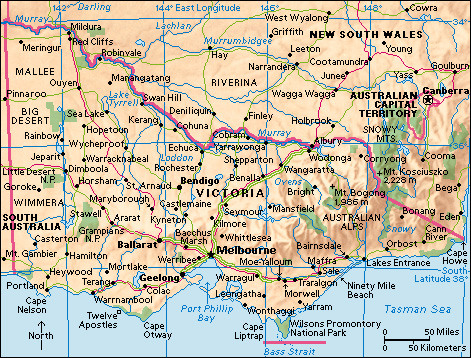Bendigo (pop. 100,649) is a city in northern Victoria, Australia, about 95 miles (153 kilometers) north of Melbourne. During the gold rushes of the 1800’s in Victoria, Bendigo was one of the largest gold-mining centers.

Since the decline of mining, Bendigo has become a thriving industrial and commercial complex serving an extensive area of the state. Its industries include food processing, textiles, and engineering works. It produces manufactured foods that are sold throughout Australia, and many firms have found good export markets for their products.
Bendigo is also the center of a rich agricultural, fruit-growing, and poultry district. Wine is also produced in the region.
Bendigo has a growing tourist industry. The Bendigo Pottery is a popular tourist attraction. The Central Deborah Mine offers underground tours at the 60-meter (197-foot) level. Other major attractions include Sandhurst Town, a mohair farm, and the annual Easter Fair. A “talking” tram offers visitors a unique way to see the sights of Bendigo and hear a recorded commentary on the city’s tourist attractions.
Bendigo is reputed to have some of the finest Victorian architecture in provincial Australia. This architecture reflects the wealth of the gold rush and the confidence of the early settlers. The city has two cathedrals, an art gallery, and many fine public buildings.
The name Bendigo was probably taken from a shepherd who was employed by a district pioneer. The shepherd was nicknamed Bendigo for his boxing skill. There was a notable prizefighter in England at the time called Bendigo.
Following the discovery of gold in Bendigo Creek in 1851, thousands of miners flocked to the district. A tent town grew up on the site. By 1858, the population of the gold fields was 23,928. Bendigo became a city in 1871. The last mines closed in 1954, ending over 100 years of continuous mining. Miners had extracted over 1.3 million pounds (600,000 kilograms) of gold during that period.

